Daan Roosegaarde's UFO-like light installation tracks pieces of space waste in real time
Dutch designer Daan Roosegaarde has created a large-scale light performance that follows pieces of junk floating around in outer space, to mark the launch of an initiative to highlight the issue of space waste.
The live installation, the first of which took place on 5 October in the Dutch city of Almere, saw arrows of neon green light projected into the sky to a distance of 125,000 to 136,000 miles.
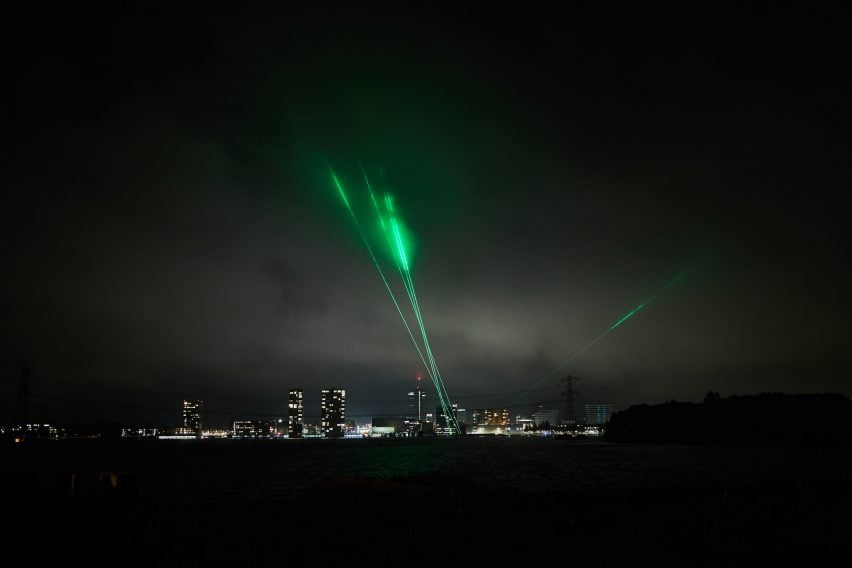
The creators used real-time data provided by tracking services to point green columns of light directly at pieces of space debris floating around above viewers' heads in real time.
"The light installation is really impressive. It moves really slowly, but this makes it very dramatic," Roosegaarde told Dezeen. "It's really great to take something very abstract and problematic, and turn it into something visual and very sharable."
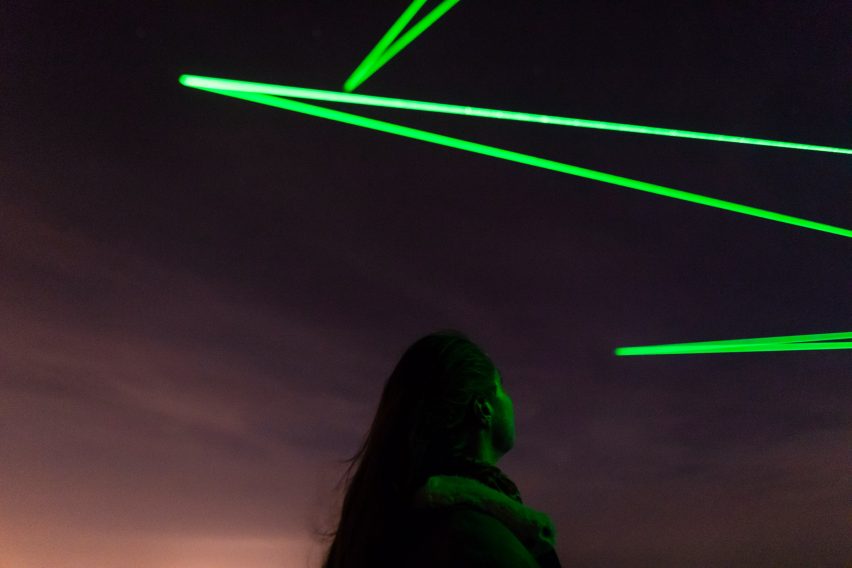
Roosegaarde said that the installation was mistaken for a real UFO, as there were several reports of a UFO sighting in the area whilst the display was taking place. "So there was a real alien beauty to it," he commented.
Looking at this first phase as a "call to action", Roosegaarde is using the installation as a way of visualising and bringing attention to the presence of space waste, making it more of a reality for those watching.
"The installation is really mesmerising, it's so beautiful to have something so abstract – 8.1 million kilos of space junk surrounding earth right now – and be able to visualise it right above your head," he said.
There are currently around 29,000 items of waste and debris larger than 10 centimetres floating in space, which pose a danger to working satellites and the International Space Station, and potentially humans too.
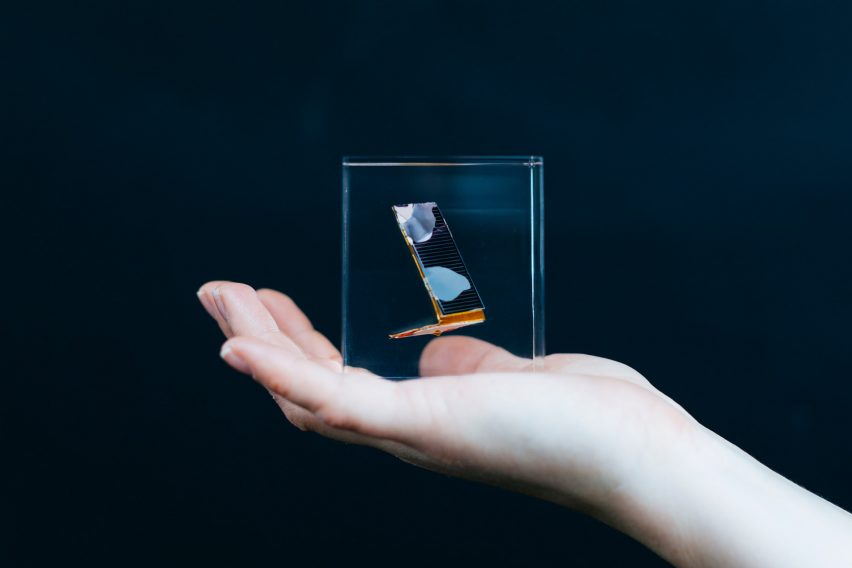
"Very large and solid objects, like rocket parts, can also hit the ground after re-entering the atmosphere," explained European Space Agency (ESA) engineer Michel van Pelt, who advised on the project.
"On any given moment, ten large pieces of space debris the size of satellites or a rocket stage are floating right above your head," Van Pelt continued. "Daan Roosegaarde wants to give these objects a face with his Space Waste Lab."
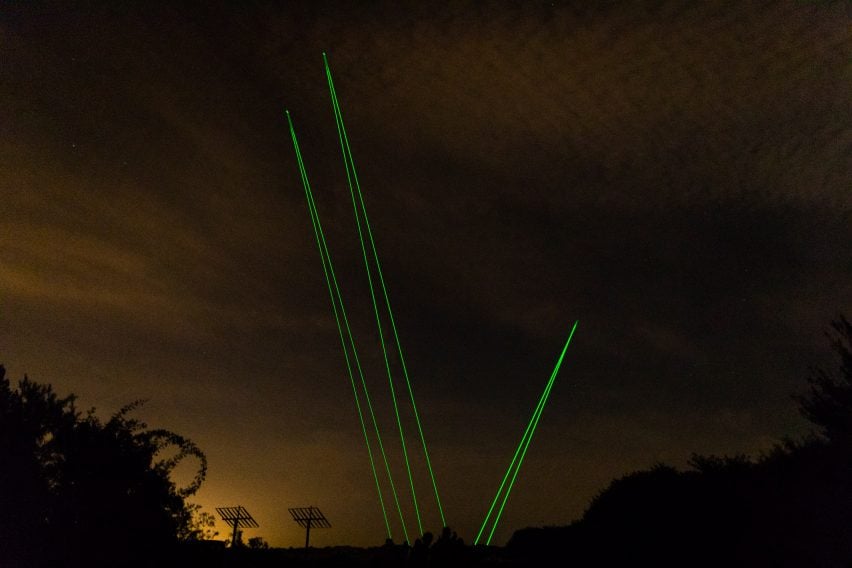
Held alongside the light performance are "living labs", exhibiting real pieces of space waste. These labs not only teach visitors about space debris, but they also get the opportunity to present their own ideas on what could be done with the waste.
The designer and his team of experts have already proposed ideas such as using the waste to create artificial falling stars as a replacement for fireworks, using it as a material to 3D print houses on the moon or Mars, or controlling and colliding parts to harvest energy from them.
The indoor exhibition also displayed artefacts supplied by the ESA, including test plates simulating a 4.3 mile per second debris strike, and part of a solar panel from the Hubble Space Telescope, left with debris craters after eight years in orbit.
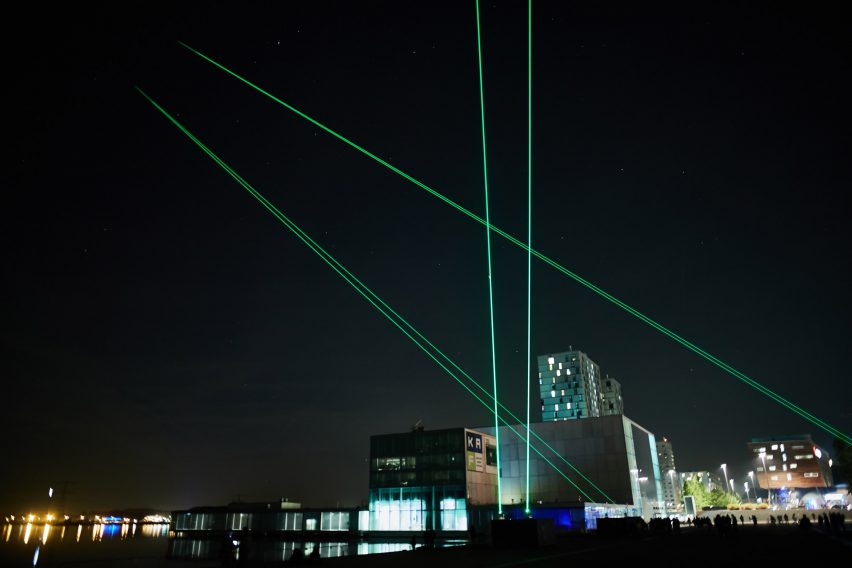
"I was in Mexico last week to see the ancient Mayan temples – the Mayans looked to space and used the stars and planets to explain their world, and it made me think that, somehow, we lost this capability of looking up to the sky to figure out what we want here in our world," said the designer.
"We have 8.1 million kilograms of space junk in space at the moment, so why don't we see it as a lego block to build something new? Why do we just throw it away? That's the conversation we need to have."
The live light performances were held last week on 5 and 6 October, and will continue to be held over four weekends above the Esplanade Square in Almere on 9 and 10 November 2018, 7 and 8 December 2018, and 18 and 19 January 2019.
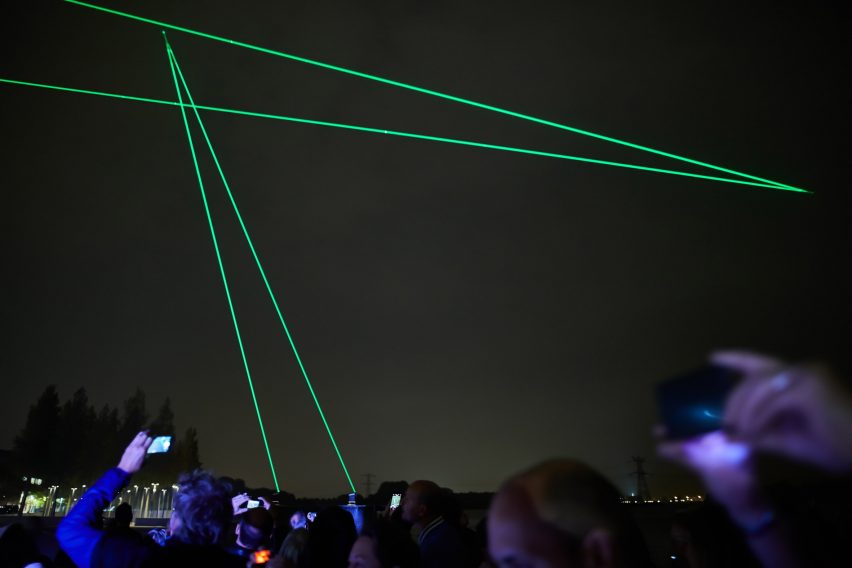
The results of the three-month Space Waste Lab will be announced on 19 January 2019 during a symposium at KAF in Almere. After this, the designer hopes to start putting these ideas into action, aiming to have results as soon as 2020.
"It's a journey, and this is where the journey starts. We are on a mission to clean up space, and we don't have all the answers yet, but we know we have to clean it otherwise in a few years we will be trapped by the layer of junk surrounding our planet, and we won't be able to explore new worlds."
The performance follows a similar aesthetic to Roosegaarde's 2016 Windlicht installation, where the designer turned a group of wind turbines into a light show by connecting the structures with moving laser beams to "show the beauty of green energy".